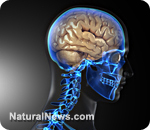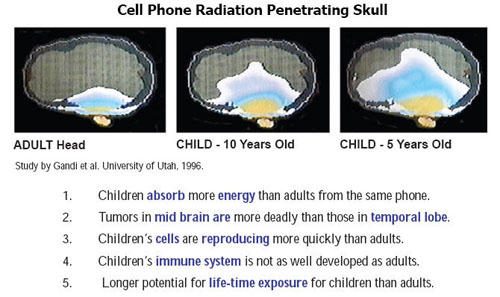In my years as an
investigative medical reporter, I've developed a rule of thumb when dealing with
the US Centers for Disease Control:
HOW SWINE FLU WAS INVENTED
AND USED TO CONTROL THE GLOBAL POPULATION
WHAT IF YOU STARTED A
DISEASE-SCARE AND NOBODY CARED?
UPDATED AND EXPANDED June
27, 2012 to include the whole mind-boggling fraud.
By Jon Rappoport
June 26, 2012
www.nomorefakenews.com
I wrote a shorter version
of this article yesterday. After I was done, I decided to expand it. So this is
the longer piece. It exposes the whole Swine Flu operation as a complete fraud,
from the beginning.
I'm assuming readers want
to understand this. They are willing to follow a track of thought from start to
finish. They want more than a headline and a few paragraphs. I say this because,
as a reporter who has been exposing medical fraud for 25 years, I've found that
the criminals try to cover their tracks. To see how they do it, you have to
unwind their ball of yarn all the way. It's not one-two-three.
With that proviso, here we
go.
Remember these terms: La
Gloria, PCR test. They are important in understanding how a fake pandemic can be
invented from scratch, based on no evidence. You see, it's not the germ, it's
the false announcement of the germ. It's the concoction of an apparition, a
ghost, a phantom. That's how you launch a fake pandemic. That's how you sell
fear. That's how you try to make people take their vaccines and keep their
mouths shut.
In my years as an
investigative medical reporter, I've developed a rule of thumb when dealing with
the US Centers for Disease Control:
If they're not lying,
they're lying.
I've found this guideline
works out well. It's almost magic.
For example, at the
so-called height of the Swine Flu epidemic, in the summer of 2009, CBS News
exposed the fact that the CDC, in an egregious dereliction of its duty, had
stopped counting Swine Flu cases. The CDC just assumed people arriving at
hospitals or doctors' offices with anything resembling the flu had Swine Flu.
Therefore, the CDC really didn't have the faintest idea how many people in
America had Swine Flu. Yet, soon after this CBS report broke, the CDC issued a
mind-boggling announcement plucked out of thin air: there were undoubtedly 10
MILLION people in the US infected with Swine Flu. No evidence. No test results.
No facts. Just scare tactics. As in: "You must get vaccinated."
Well, they're bloviating
again, in a choice bit of revisionist history.
A new CDC study, published
in the Lancet Infectious Diseases Journal, states that the final global figure
for Swine Flu deaths, 18,500, was grossly underestimated. The new and far more
precise figure is...25,000? No. 50,000? No. 100,000?
No.
250,000! But wait. It
actually might be as high as 575,400, say the CDC wizards.
What kind of rabbit hat is
the CDC pulling those numbers from? The hat is called "a computer model" or a
"statistical model." This is code for: "We devised algorithms, equations, and
charts which no one will bother to examine or assess or judge. Trust us. We're
the pros."
It's well known that
computer models can be created and spun to achieve a wide variety of outcomes,
depending on, for example, the result one favors from the get-go. Models of
global warming have come under withering attack on that basis.
In typical bungling CDC
fashion, the researchers have left clues about their work. The study authors
write, "Diagnostic specimens are not always obtained from people who die with
influenza and the viruses might no longer be detectable by the time of death in
some people." You might want to read that sentence again.
Translation: "We don't know
what we're talking about when we jack up the estimates on deaths from Swine Flu
because, well, there are a lot of dead people who died without ever having been
tested for the H1N1 Swine Flu virus, and we can't dig up their bodies now and
run the tests. But our computer models can somehow perform post-mortem
exams."
Or: "Many, many people died
without anyone knowing whether they had Swine Flu. So naturally we'll assume
they did."
This is called science, and
American tax dollars pay for it. They pay for an agency, the CDC, that is tasked
with scaring Americans into getting vaccines, no matter what. Even if a re-write
of history is necessary.
You see, after all the
whipped-up hysteria, in 2009, when the CDC and the World Health Organization
told us that a great horror, the H1N1 virus, was stalking the globe and mowing
people down left and right with Swine Flu, the final mortality figure,
worldwide, was an extreme embarrassment to these agencies. It was especially
embarrassing because, well, the World Health Organization claims that, every
year, between 250,000 and 500,000 people die from ordinary regular seasonal flu.
This is not called a pandemic that could wipe out humankind. But when 18,500
people die of Swine Flu, this is called a Level 6 Pandemic, the highest danger
category the World Health Organization can declare.
The CDC also announced
today that, in 2009, the Swine Flu virus was "the predominant virus." In other
words, we are supposed to believe, again, with no evidence, that most people who
died that year from flu died from Swine Flu. Or to put it another way, in 2009
the usual seasonal flu viruses that circulate decided to take a holiday and give
the new kid on the block, Swine Flu, H1N1, a chance to spread his wings and see
what he could do.
Therefore, these viruses
must be cordial to one another. When a new one comes along, the others make
room. They have a conference (thankfully not supported with tax monies) and they
come to a consensus.
In some media outlets, the
AFP story on this new CDC Swine Flu study included an interesting final
sentence, and in at least one other major outlet, the final sentence was
omitted.
It was: "The Council of
Europe accused the agency [the World Health Organization] of causing unjustified
scare and a waste of public money [in their launch and handling of the Swine Flu
debacle.]"
Nothing to see there, just
move along. Listen to the CDC and the World Health Organization and obey. Do
what they tell you to do. They know stuff; you don't. They're brilliant; you're
a robot. Line up and take your vaccine.
If you swallow all that, I
have stunning condos for sale on Jupiter.
Now let's go deeper.
Realize, as well, that when
the whole Swine Flu scare was launched in the spring of 2009, the WHO absurdly
declared the H1N1 virus a Level-6 Pandemic based on a mere 20, that's 20, cases
of Swine Flu. At the same time, WHO changed its definition of "Level-6 Pandemic"
so that severe destruction and widespread human death were no longer required.
This is like saying a pandemic can be a pandemic without being a pandemic.
(Search Peter Doshi, BMJ Online, for coverage on these two points.)
These factors provide
strong circumstantial evidence that Swine Flu was an operation designed to
frighten the global population, based on nothing. Nothing but anticipated
pharmaceutical profits from the sale of vaccines and drugs.
Where did Swine Flu
originate? A place called La Gloria, in Mexico, where a large industrial pig
farm was located. Press reports described outdoor "pig feces lagoons" on the
property. When workers began to get sick, the area was sprayed with unknown
chemicals. More workers fell ill. Anyone with a basic knowledge of public health
could testify that this combination of mind-boggling sanitation plus a strong
germicide could cause human disease. In fact, it doesn't matter which particular
germs are present in the mix.
People at the CDC had to be
well aware of this. Yet their choice was to rush researchers to La Gloria, armed
with the unfounded assumption that some novel virus, never before seen, was the
culprit, and their job was to take blood samples and discover what the new germ
was.
Why? Why assume when
workers who operate in that kind of environment get sick there is some new
disease at work? The symptoms of the workers were not unusual, given the
circumstances. Workers dying in that vat of filth and chemical soup should be
expected.
But, up front, based on no
evidence, the CDC on-site team was going for a new germ and a new disease, and
that's what they announced they had found. A gullible world, fed by press
reports, bought in.
But, you say, cases of
Swine Flu were subsequently diagnosed all over the planet. It wasn't just La
Gloria. You have to understand how these diagnoses were made, when they were
made at all, beyond eyeballing sick people with "flu symptoms" and automatically
claiming Swine Flu was the cause.
There is a test called the
PCR. This was the major tool used to diagnose Swine Flu. Given the fact that
it's an expensive genetic assay, we can assume it wasn't done often. The PCR
basically takes very, very tiny amounts of unknown human genetic material and
amplifies them to the point where they can be observed. In other words, there
wasn't enough "germ" to begin with. It was so miniscule, you couldn't ID it as
is.
This is called a clue. In
order to even begin to think about indicting a germ as a cause of a disease, you
need to find very large amounts of it. The army of germs has to be huge and it
has to be doing something in the body. The PCR test doesn't yield such a
conclusion at all. If anything, it confirms that the army was
non-existent.
The test used to diagnose
Swine Flu was useless. It was misleading. It was obvious it was misleading. But
it was used. Why?
Because it would provide
cover. It would make it seem as if Swine Flu was everywhere on the
planet.
This is more circumstantial
evidence of an intentional operation.
Call a local environmental
calamity (in La Gloria) a new disease based on no evidence. Have the leading
public health agency in the world (the WHO) change its definition of pandemic to
allow a declaration of a level-6 threat, based on a mere 20 cases. Start
labeling ordinary flu Swine Flu. Claim it is a new disease, based on no
evidence. Use a test to diagnose it that is useless and misleading.
And you're home free. You
have a global threat. You have fear. You have drug companies making a fortune.
You have people believing they have to get their vaccines. You have toxic
vaccines (by their very nature and composition) injected into the global
population.
You have billions of people
listening to the WHO and the CDC and following medical orders, which really
amounts to political control. It's all part of the operation to ensnare people
into a cradle-to-grave medical apparatus that diagnoses one disease after
another, treats these diseases with highly toxic drugs that produce new
symptoms, then diagnosing those symptoms as new diseases and then treating those
with more toxic drugs, until eventually death comes.
Except a funny thing
happened on the CDC's road to victory in the Swine Flu operation. The Internet
rose up like a bear and swatted the CDC with a big paw. A handful of reporters
and researchers (including moi) blew the deal. Exposed the scam.
The CDC and the WHO lost.
They were slammed. Governments all over over the world are holding stocks of
unused H1N1 vaccine, because people didn't show up to get jabbed in the arm. It
was a fiasco for the medical cartel.
Yes, Virginia, sometimes we
win. And when we do, if we learn enough, we're ready for the next load of lies
and we know what to do.
Jon Rappoport
The author of an explosive
new collection, THE MATRIX REVEALED, Jon was a candidate for a US Congressional
seat in the 29th District of California. Nominated for
a Pulitzer Prize, he has worked as an investigative reporter for 30 years,
writing articles on politics, medicine, and health for CBS Healthwatch, LA
Weekly, Spin Magazine, Stern, and other newspapers and magazines in the US and
Europe. Jon has delivered lectures and seminars on global politics, health,
logic, and creative power to audiences around the world.
www.nomorefakenews.com
qjrconsulting@gmail.com.jpg)













